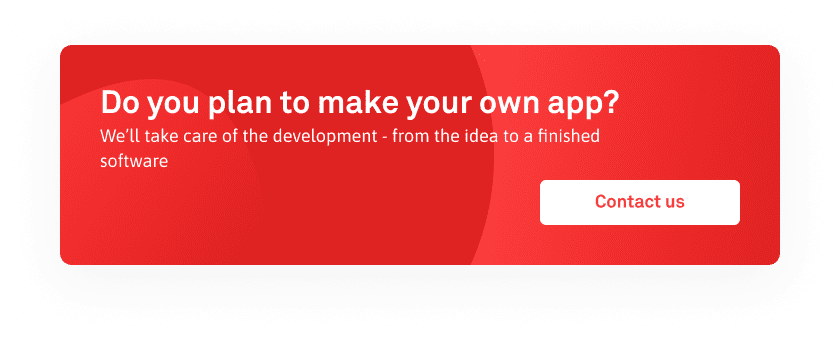When it comes to app development, you want to ensure it’s an app that can easily be navigated by both the user and the owner. This will be achieved with a quality balance of front end (what the users see) and back end development (what the developer sees).
Since different technologies and languages will produce different results on both ends, choosing the right one for your project is crucial to its success.
While there are hundreds of programming languages available for app development, a vast majority of people will gravitate to four essential languages:
- Python
- JavaScript
- PHP
- Ruby on Rails
Each programming language will come with a set of rules that are followed by the developers. These can be compared to the different speaking languages around the world. While they are all designed to communicate with one another, the way that is done will be different for each.
In addition to that, every programming language will come with frameworks. These are essentially a collection of programs that act as a pre-defined skeleton which you can modify. They will help to speed up the process for developers.
What factors will play a role in your decision?
There’s no hiding the number of choices you will have when deciding between the best programming language and technology for your app development project. There’s also no hiding how important of a decision it will be to your app’s success.
When being diligent throughout this process, you’ll want to consider various things that will play a major role in moving forward.
- Devices/Platforms – not all app development technologies will be best suited for all devices and platforms. Will your app be available over the web, will it be a native app, iOS, Android, there’s a lot to consider here.
- User Experience – if you intend to create an app that people enjoy and benefit from, user experience is essential. Especially in this day-and-age, users want that “wow” factor every time they make use of your app.
- Time to Market – every project will come with an expected release date. Unfortunately, the programming language and frameworks you choose can have a negative effect on this timeline. Some languages will allow developers to move quicker than others.
- Function – the function of your app will include everything from the network conditions to the very essence of what your app will do for the user. Every language comes with certain strengths that you can take advantage of.
- Compatibility – if you already have some kind of product or app and are looking to build on top of it, you’ll want to ensure the language you’re using is compatible with the one you’ve used before. This is especially true if you have several different apps being built under the same company.
- Future Plans – while you likely have a vision for what you want your app to do when it’s officially released, you should always have a plan for your app down the road. This includes updates, maintenance, upgrades, and new features for the users.
- Budget – everyone will have a budget for their app that can’t be compromised during the development process. Some languages are more rare or complex than others, meaning some developers will charge more for their time.
- Support – every language will come with a community ready to support you with any help you need, or any help your developer needs. Ensuring you have a strong support system behind you and developers can help you out of some difficult situations.
- Security – once you release your app out to the world, you want to ensure it’s protected from any security threats. Data loss and leaked information can spell the downfall of your unique app idea, so keep this in heavy consideration when selecting your programming language.
There’s going to be a lot that needs to be taken into consideration when having an app developed. If you aren’t careful, you’ll end up having to compromise one or more of the factors above.
Ruby on Rails
If you’re considering Ruby on Rails as your tool for app development, you’ll be getting a dynamic, object-oriented, open-source programming language. It was created in the 90s by Yukihiro Matsumoto and utilizes an MVC pattern (model-view-controller). Today, it is home to various high-end apps like Twitter, Living Social, and Hulu.
Let’s take a look at some of the benefits that come with Ruby on Rails:
- Has a large community that offers unconditional support
- “Gems” can help speed up the process for developers, as well as making it more modifiable and functional.
- Quicker development means less cost
- Code is easy to read
- Built-in testing frameworks
- Interacts easily with outside frameworks
At the same time, Ruby on Rails is known to be slower, not as popular as other languages, and is prone to hosting issues.
PHP
PHP was created by Rasmus Lerdorf in 1994 when he wanted to track visits to his online resume. It wasn’t until four years later that it officially became a programming language. Today, it is the most-used programming language thanks in large part to WordPress. It has also been used with Facebook Lyft, Hootsuite, and Slack.
Here are some of the pros to PHP:
- Was created long before other popular languages
- Powers a large majority of websites and apps
- It’s an open-source project
- Platform-independent
- Lower cost due to ease of development
As popular as PHP is, many have experienced difficulties with larger applications, as well as security issues due to it being an open-source project.
JavaScript
Next to PHP, JavaScript is likely the other programming language you’ve heard of before. It was created by Brandan Eich in 1995 while he was working for Netscape Communications. While it isn’t used by as many apps as PHP, it’s known for handling much-larger applications. Some apps that are powered by JavaScript are Netflix, Candy Crush, LinkedIn, and Uber.
Here are the pros to using JavaScript:
- Highly-effective for apps with large amounts of traffic
- It’s an “interpreted” language, meaning less time to market
- Easy to read and write
- Works well with other programming languages
- Capable of front-end and back-end development
On the downside, it is an open-source project, doesn’t work well when being viewed on different browsers, and only supports single inheritance.
Python
While Python isn’t used by as many apps as Java or PHP, it has steadily grown in popularity over the past few years. It wasn’t originally created for web development, but software engineers eventually saw the benefits. It doesn’t come with a lot of boundaries, being used for web development, scientific computing, and building eCommerce or enterprise systems.
Here are the pros to Python:
- Easy to learn, hard to master
- Highly flexible
- Ability to use third-party modules
- Open source with a strong community
- Utilizes less coding
- One of the most-trendy languages out there today
In regards to the downfalls of Python, it is slower than the other languages, isn’t preferred by mobile developers, and isn’t very good with memory consumption.
Are you ready to get started with your project?
There will be a lot to consider when choosing a technology stack for your app development. Luckily for the end-user, it won’t make too large of a difference.
If you’re looking to have an app built, it’s always best to discuss your vision for the project with the developer first. They’ll be able to give you the perfect advice, especially since every project will be unique and require specific features.
—
Photo by Fabian Grohs on Unsplash



